mobile View, to the German Version tap the flag

- State of the Kurd People
- the right of existence is given since 1920 by the treaty of Sèvres
- realised at present only in initial stages in the north of the former Republic of Iraq
- internationally not recognized
• Flag
• Meaning/Origin of the Flag
• Maps
• Numbers and Facts
• History
• Origin of the Country's Name
• Kurd States in History
– Kingdom of Kurdistan (1922–1924)
– Republic of Ararat (1927–1931)
– Red Kurdistan (1923–1929)
– Republic of Mahabad (1946)
– Republic of Lachin [Laçîn] (1992)
• Rojava
• Flags of the Yazidi
• Flags of the PKK
• Flag of the Medes
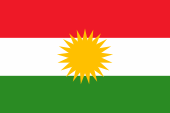
National flag






The flag of Kurdistan exists for a long time. It goes back to the Dictate of Versailles (28th of June 1919), and the Treaty of Sèvres on (10th of August 1920), and the in this way to be formed Kurdish state, which never existed. To explain the flag, there are several theories:
1st) The color combination of the Kurdish colors of red, white and green is very old and dates back to the time of the Medes, that is the 6th and the 5th century B.C. Red stands for life, green for the earth. The white stripes belonges the over the horizon rising sun, with 21 beams. The sun symbol goes back to the Mithraic religion (Cult of Mithras) and the number 21 has until today a mythical / mystical significance in the live of the Ezidi Kurds (Jesids). Look furthermore: Flag of the Medes. The Persians took over the color combination later, but in reverse order, so that green, the color of Islam appears at the top.
2nd) Another explanation sees red as the national color of the Kurds, and sees green as the color of Islam. The sun's rays should represent the various Kurdish tribes. It should be noted, however: The color combination is older than Islam, and there are more than 200 Kurdish tribes.
Source: A. Zagros

→ click here

Area: ca. 150 000 square miles (Kurdish area of settlement)
Inhabitants: ca. 27 000 000 Kurds, thereof ca. 12 000 000 in the Turkey, ca. 4 500 000 in Iraq, ca. 9 000 000 in Iran, ca. 1 200 000 in Syria, ca. 150 000 in Armenia and Azerbaijan, ca. 600 000 in European exile
Capital: none
Languages: very much dialects in five big groups: Northern Kurdish, Middle Kurdish, Southern Kurdish, Zazaki and Gorani
Source: Wikipedia (D)

426 B.C. – 355 B.C. · the Greek author Xenophon mentions a people of the "Karduchi" (Kurds?)
114–117 · whole Kurdistan belongs momentary to the Roman Empire, extended territories in the East become given up
395 · at the partition of the Roman Empire comes western Kurdistan to the East Roman Empire (Byzantium), the eastern Kurdistan comes under control of the Persian Sassanides
642 · whole Kurdistan comes to the Arabic Califate
9th cent. · Kurdistan comes under control of the Abbasides
11th cent. · the Kurds constitute various independent principalities
1054–1067 · conquest by the Seldshuks
1242 · invasion of the Mongols, Kurdistan becomes a part of the Empire of the Mongols
1260 · Hulagu, a grandson of Dsingis Khan, declares hisself to the Ilchan and establishes the Huelaegue's Empire, which includes the today's Kurdistan, Georgia, Armenia, Azerbaijan, Iraq, Iran, Pakistan and Turkmenistan
16th cent. · Kurdistan comes to the Ottoman Empire
1914–1918 · First World War, the Ottoman Empire and its allies are subject to the Entente
1st of January 1920 · coming into force of the Versaille dictate, the Ottoman Empire becomes partitioned except a torso state, in this way comes the Kurd region to five different states
10th of August 1920 · Treaty of Sèvres, the Ottoman torso state has to cede further territories to Greece and Armenia, as well as to separate an independent State of the Kurds out of its territory, the treaty becomes realized only partially and de facto terminated in 1923
1925 · Kurdish revolt in the Turkey
1937 · Kurdish revolt in the Turkey
1946 · proclamation of a "Kurdish Republic" in Mahabad (Iran)
1947 · Iranian troops terminate the "Kurdish Republic"
1958 · Kurdish revolt in Iraq
1970–1974 · the Kurds get a semi-autonomous status in the Iraq
1974 · the Iraqi Baath-Party changes its politics and the Kurd become especially prosecuted in the Iraq now
1975–1977 · Kurdish revolt in Iraq
1978 · foundation of the PKK (Worker's Party of Kurdistan), guerilla war against the Turkish government
1988 · the Iraq attacks massively against the Kurds, mass flee
1991 · Second Gulf War, Kurdish revolt in Iraq, suppressed by Iraqi troops, the UN arranges s protection zone for the Kurds in the northern Iraq, in the three Iraqi northern provinces arises de facto a State of the Kurds
1993 · quarrels between the Kurds in the northern Iraqi Kurd's state
1995 · the Turkey invades momentary in the northern Iraqi Kurd's state
March 2018 · Turkey invades the northern Syrian Kurdish state of Rojava, and is thus permanently occupying Syrian territory
Source: Atlas zur Geschichte,
Wikipedia (D),
Die Völker der Erde,
Discovery '97,
Weltgeschichte

The term "Kurdistan" means "Land of the Kurds", and of course, goes back to the Kurds themselves. The Kurds, who themselves call "Kurdi" consider themselves as descendants of the Medes. To explain the origin of the word there exist many theories:
Even the Sumerians (about 2000 B.C.) called their northern neighbors in the mountains of the Zagros and Taurus as "Kurd". "Kur" means in Sumerian "mountain".
The Kurdish languages belong to the Iranian-speaking area, so that is also a possible interpretation out of the Iranian language. In the new Persian language the Kurds are known as "kord", which could stand in relationship with the Persian word "gord". It means "strong".
The Arameans in Syria called their neighbors in the north-east "qurti", therefore the name could also come from.
The Armenian language has the word "kardokh" and the Greek writer Xenophon (426 B.C. to 355 B.C.) mentioned in his works the people "Karduchi". Whether these words the Kurds were meant is unknown.
Supposedly, the name of the people should also go back to the city of Gordion (Gordium), the ancient capital of the Phrygians. It is now called Yassihüyük, and is 90 km west of Ankara. However, the Kurds have never lived there, and this theory is considered very unlikely.
Source: A. Zagros

Kingdom of Kurdistan
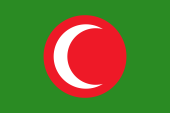
National flag of the Kingdom of Kurdistan,
Source, by: Wikipedia (D)



The Kingdom of Kurdistan existed from 1922 to 1924 in northern Iraq. The flag showed the Kurdish colors red, white and green, but as a green bunting and a a red disc (probably a symbol of the sun) centered on it. In it appears a silvery crescent.
The green cloth and the crescent are symbols of Islam.
Source: Wikipedia (DE)

Republic of Ararat
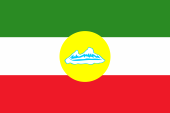
National of the Republic of Ararat,
Source, by: World Statesmen



The Republic Ararat existed from 1927 to 1931 in northeastern Turkey. The flag showed the Kurdish colors red, white and green, but in reverse order. The central element is a golden disc (probably a symbol of the sun), on it the contours of Mount Ararat.
Source: Wikipedia (DE)

Red Kurdistan
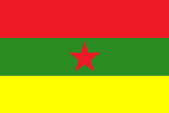
National flag of the Red Kurdistan,
Source, by: A. Zagros



Red Kurdistan was a from 1923 to 1929 existing autonomous socialist territory within the Soviet Republic of Azerbaijan, located between Armenia and Nagorno Karabakh.
Source: Wikipedia (DE)

Republic of Mahabad
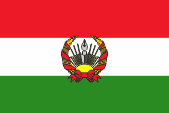
National flag of the Republic of Mahabad,
Source, by: A. Zagros



The Republic of Mahabad existed from January to December 1946 in the northwest of Iran. It arised under the protection of the Soviet Union, in this way appears apart from the Kurdish colors of red, white and green, a socialist-designed coat of arms in the middle of the flag. The central element is a pen, a symbol of culture and science.
Source: Wikipedia (DE)

Republic of Lachin
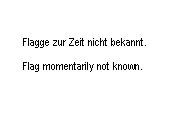
The Republic of Lachin (Laçîn) was proclaimed in 1992, and should probably continue the traditions of the from 1923 to 1929 existing Kurd State in the region between Armenia and Nagorno Karabakh. It went down in the warlike conflict between Armenia and Azerbaijan, the Kurds have fled or were expelled.
Source: A. Zagros

Rojava (Western Kurdistan)
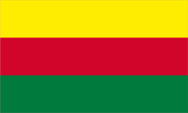
since 17th of March in 2016
flag of the autonomous Kurdish region Rojava in northern Syria,
Source, by: commons.wikimedia.org



In Syria's civil war, which has continued since 2011, Kurdish militias have managed to occupy large areas of northern Syria. There were roughly three parts of the country: Afrin, Western Kurdistan west of the Euphrates (Manbij) and Western Kurdistan east of the Euphrates. Afrin was occupied by Turkish troops in March 2018.
Source: Wikipedia (DE)

Flags of the Yazidi
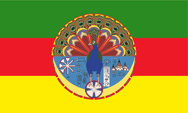
Flag of the Yazidi,
Variant, not official



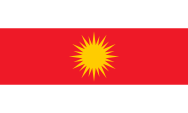
Flag of the HPÊ



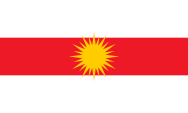
Flag of the HPÊ (variant)



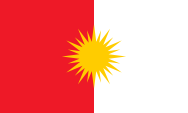
Flag of the HPÊ (variant)



The Yazidis (even: Yeziden, Jesidi, kurd: Êzîdî) are a three-millennia-old religious groups and Kurdish ethnic community. Originally, all Kurds have been Yazidis. Yazidis do not proselytize, as Yazidi you be born. In the Near East, there are still about 600.000 Yazidis. Because this religion is, like others, exposed to constant persecution by Islam, now live 200.000 Yazidis outside their origin settlement area, as in Europe and the USA and Canada. Sometimes the Yazidis are called as "devil worshipers". This is wrong. The Yazidis is even not allowed to speak out the name of the evil.
The colors of the Yazidis are green, red and yellow, if they define themselves as Kurds. On holidays are worn even clothes in these colors, and they are naturally displayed on the flag. According to ancient tradition these are the colors of nature in the month of April, but which even will be interpreted as follows: Green stands for luck and the nature, red for the blood of the victims who had been killed in the enduring struggle for the survival of the Yazidis, and yellow stands for the sun. The emblem shows "Melek Taus-i", the peacock angel, the main angel who mediates between God and the Yazidis. He is surrounded by cuneiforms and religious and magical symbols, as well as a small representation of the central sanctuary of Sheikh Adi in Lalish.
The bad security situation in Iraq, the constant threat from Sunni Muslims, not least from the Islamic State, led the Yazidis - if they were alive and remained in the country - to organise themselves into their own self-defence forces (military and police). The most important and leading group is the HPÊ (Hêza Parastina Êzîdxanê). It uses white and red flags with a golden star, often in different arrangements. Officially is the flag is white-red-white with stripes in the ratios 1:2:1. The red stands for the bloody sacrifices of the ancestors, the white for the bright future and the people.
Source: Volker Preuß,
twitter.com/EZIDXAN365

Flags of the PKK
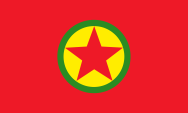
Flag of the PKK
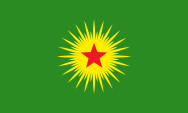
Flag of the KKK
This flag is very often considered for the flag of Kurdistan. However, it is the flag of the since 1978 existing left and nationalist Worker's Party of Kurdistan (PKK – Partia Karkaren Kurdistan). The mistake has it's roots probably in this fact, that the flag is very often to see in context with Kurdish activities. The KKK came into beeing in 2006 and it was adoped a flag. It is single-coloured green and shows in the middle a big yellow star with 24 beams which stand for the 24 tribes of the Kurds, exactly like in the national flag of Kurdistan.
Source: Volker Preuß

Imaginary Flag of the Medes
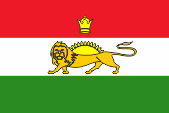
The imaginary flag of the Medes
The here shown flag of the Medes is imaginary, that means it is an artificial construct of recent origin, but it combines heraldically the symbolism of the Medes: the colors red, white and green, the lion and the sun. The sun has its origin in the Mithraic cult, the religion of the Medes. The lion stood for strength and courage.
Source: A. Zagros


Kindly supported by: A. Zagros (D)
![]()



































